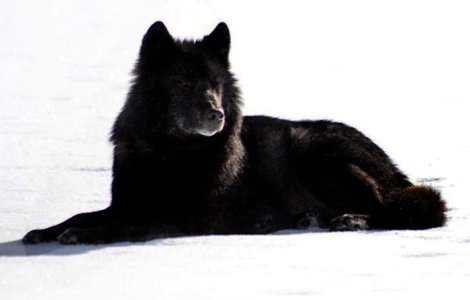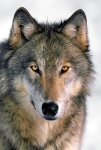Romeo – Alexander Archipelago wolf
The population of Alexander Archipelago wolves on Prince Wales Island/Tongass National Forest has declined 60% in 0ne year. The plan to log old growth forest on the island must be halted to save these wolves.
===
Imperiled Wolf Population on Alaska’s Prince of Wales Island Crashes
From Center for Biological Diversity
For Immediate Release, June 5, 2015
SITKA, Alaska— State and federal authorities are reporting a “dramatic decline in the wolf population on Prince of Wales Island, Tongass National Forest.” A new report records a 60 percent drop in the number of Alexander Archipelago wolves in just one year, reinforcing conservationists’ arguments that plans to log old-growth forests on the island should be halted to protect the wolf and other wildlife.
An Alaska Department of Fish and Game draft report estimates a total of only 89 wolves in the area — including 60 on the main island — compared with 220 only a year ago. That estimate was cited in a May 29 briefing paper by the U.S. Forest Service — whose approval of the Big Thorne timber sale on the island is being challenged in court by Greenpeace and the Center for Biological Diversity and other groups. The Forest Service warns the new data “increases the probability of [an Endangered Species Act] listing and will almost certainly become a factor in ongoing litigation against timber sales.”
“This sudden and dramatic decline of Alexander Archipelago wolves on Prince of Wales is scary,” said the Center’s Alaska Director Rebecca Noblin. “Our efforts to save the wolves may prove too little, too late unless the Fish and Wildlife Service takes these numbers to heart and protects the wolves under the Endangered Species Act. Once they’re gone, they’re gone.”
The revelations come as the U.S. Fish and Wildlife Service works toward a year-end determination on whether to list the Alexander Archipelago wolf as a threatened or endangered species under the Endangered Species Act, in response to a petition filed by Greenpeace and the Center for Biological Diversity. Threats to the Alexander Archipelago wolf all stem from old-growth forest habitat loss to logging and human access to formerly remote places on the extensive system of logging roads. Right now, primary wolf habitat on Prince of Wales lays in the path of the Big Thorne timber project, a major old-growth logging effort that is being challenged in the Ninth Circuit court of appeals.
“The new information is shocking and tragic,” said Larry Edwards of Greenpeace, who has worked on wolf issues in the region for over a decade. “A one-year 60 percent drop in population is bad enough, but the critical problem is that the Prince of Wales area population had already been reduced to a very low number. Now, the number is in the red zone.”
Worse yet, the 89-wolf estimate is already outdated, the Forest Service briefing paper indicates. The “estimates were made prior to the 2014/2015 hunting and trapping season, wherein 29 animals were known to be taken. This further reduces the likely population.”
The wolves on Prince of Wales and its associated islands are geographically isolated and genetically distinct from other Alexander Archipelago wolves, which themselves are a subspecies of gray wolves. Recent genetic research shows that a large portion of genetic diversity in the gray wolf species is found in Alexander Archipelago wolves, making them especially important from a conservation perspective.
The information on the new population estimate comes from a Forest Service briefing paper that summarizes the content of the Alaska Department of Fish and Game’s report. The briefing paper was provided to Greenpeace yesterday. The final report will likely be issued next week.
“After we see the full report, we will decide what actions to take,” Edwards said. “I testified to the Board of Game in January, after hearing the Department of Fish and Game’s presentation on these wolves. I said the board should close the season until the next board cycle, three years from now. That was not done, even though a crisis seemed obvious already. We are prepared to ask the Department’s commissioner for an emergency order blocking the 2015/2016 season.”
The Center for Biological Diversity and Greenpeace filed the petition to protect Alexander Archipelago wolves under the Endangered Species Act in 2011. The U.S. Fish and Wildlife Service made a preliminary determination last year that listing the species “may be warranted.”
The Center for Biological Diversity is a national, nonprofit conservation organization with more than 900,000 members and online activists dedicated to the protection of endangered species and wild places.
===
Photo: Courtesy Steve Quinn
Posted in: Action Alert, gray wolf, biodiversity
Tags: Alexander Archipelago wolf, Prince of Wales Island, Tongass National Forest, halt plans to log old growth forests on island, wolf population drastic decline








 Boulder White Clouds Council
Boulder White Clouds Council Exposing The Big Game
Exposing The Big Game Footloose Montana
Footloose Montana Friends of the Clearwater
Friends of the Clearwater Lockwood Animal Rescue Center
Lockwood Animal Rescue Center Louise du Toit
Louise du Toit LUPUSLAETUS
LUPUSLAETUS Mercy For Animals
Mercy For Animals Northern Idaho Wolf Alliance (NIWA)
Northern Idaho Wolf Alliance (NIWA) Predator Friendly®- Because Wildlife Matters
Predator Friendly®- Because Wildlife Matters Project Coyote
Project Coyote Project: Wolf
Project: Wolf The Nature Conservancy
The Nature Conservancy The Ravensong Group
The Ravensong Group WildEarth Guardians
WildEarth Guardians Wisconsin Wildlife Ethic-Vote Our Wildlife
Wisconsin Wildlife Ethic-Vote Our Wildlife Wolf And Wildlife Studies: Jay Mallonee (Independent Wolf Biologist)
Wolf And Wildlife Studies: Jay Mallonee (Independent Wolf Biologist) Wolf Song of Alaska
Wolf Song of Alaska Wolves in english ! Les loups en anglais !
Wolves in english ! Les loups en anglais ! WWP's Gray Wolf Page
WWP's Gray Wolf Page Yellowstone To Yukon Conservation Initiative
Yellowstone To Yukon Conservation Initiative
How awful. It’s shocking to see all of these population crashes in our lifetimes – and a ‘let’s try to work this out without protections so that economies won’t crash’ by those we entrust to protect our wildlife! I hope something will be done, but I have to say I am not optimistic. Not with the Obama Administration, a Democratic administration, actively seeking to weaken the ESA.
LikeLike
Obama has been and is an ecological nightmare and holocaust. He’s failed to list several birds that needed protection under the ESA, and he appointed a hooved locust lover as his Secretary of the DOI, akin to appointing the fox to guard the hen house before the latest lady who’s into sporting goods stores. Gosh, I miss Bruce Babbitt from the Clinton years. A Secretary who actually comprehend the wolf science!
That’s a photo of the deeply adored “Romeo”, the tame wolf who chose humans and their dogs to be his pack, his tribe.
LikeLike
A beautiful specimen!
LikeLike
It’s very discouraging I must say. Criminal. Heartbreaking.
LikeLike
Reblogged this on The Eclectic Poet and commented:
The lunacy has to stop…
LikeLike
The Center for Biological Diversity has been fighting for these wolves for several years. I couldn’t find a current petition to sign. I’ll keep looking….or I’ll phone them.
Click to access AA_Wolf_ESA_Petition_10-Aug-2011.pdf
LikeLike
I just phoned Rebecca Noblin, Center for Biological Diversity, (907) 274-1110, rnoblin@biologicaldiversity.org ..left message in voice mail. I asked if there was a newer petition to sign.
LikeLike
Reblogged this on Coalition for American Wildbirds.
LikeLike
Romeo
http://www.nickjans.com/#!A-Wolf-Called-Romeo/c52p/AFDF468D-94C6-424E-B6C8-7823EE71405D
LikeLike
Reblogged this on GarryRogers Nature Conservation and Science Fiction and commented:
Save the forest, the wolves, and much more.
LikeLike
Is sad and seems so hopeless. The wolf haters are a powerful group, and so are the loggers and developers. We should fight them as hard as we can, but we should probably expect to lose. And what terrible losses they will be, the wolves and the forest..
LikeLike
Reblogged this on hocuspocus13 and commented:
jinxx ♣ xoxo
LikeLike
The Republicans wont rest until every wolf, coyote, and bear is wiped out and all our forests are cut down, Do we really need these jokers in politics. Nah, didn’t think so.
LikeLike
The word “predator” has become very dirty. It connotates some form of malicious species hell bent on causing as much damage as possible just for laughs. It is this individual’s perspective that anyone over the age of six can understand that a predatory species is one that hunts other species in order to survive. Meat eaters, they can be carnivores or omnivores. This is nature and it is for survival. So why the dirty word and bad reputation? It’s utterly stupid.
And as for the “top of the food chain”, this is not a feudal social hierarchy – there are no nobles or peasants in the animal kingdom spanning across the entirety of species in any particular area.
LikeLike
*connotes
LikeLike